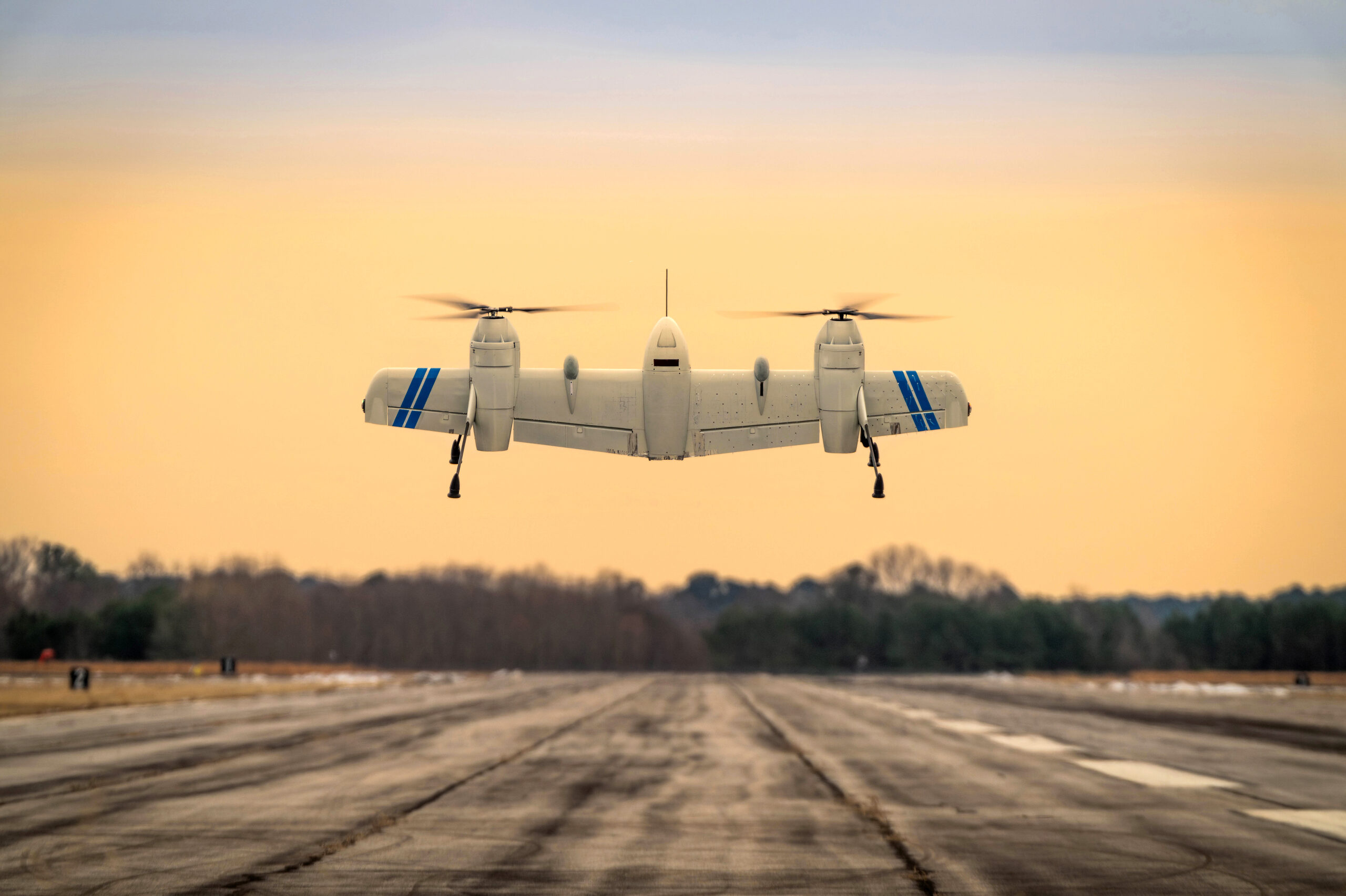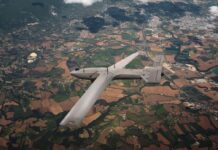Sikorsky flies rotor blown wing UAV in VTOL and horizontal flight modes
Peter Felstead
Lockheed Martin’s Sikorsky has successfully validated the advanced control laws to successfully fly a ‘rotor blown wing’ unmanned aerial vehicle (UAV) in both helicopter and airplane modes, Lockheed Martin announced on 10 March 2025.
Powered by batteries, the 52 kg twin prop UAV prototype, which has a 3 m wingspan, has demonstrated operational stability and manoeuvrability across all flight regimes, along with the potential to scale the unique vertical take-off and landing (VTOL) design to larger sizes requiring hybrid-electric propulsion.
“Combining helicopter and airplane flight characteristics onto a flying wing reflects Sikorsky’s drive to innovate next-generation VTOL UAS aircraft that can fly faster and farther than traditional helicopters,” Sikorsky Vice President and General Manager Rich Benton was quoted as saying in a company press release. “Our rotor blown wing platform is a prime example how we are leveraging the breadth of our 102-year aviation heritage to develop new designs that meet the emerging missions of commercial and military operators.”

Sikorsky Innovations, the company’s rapid prototyping group, is heading up the effort to develop and mature the rotor blown wing design. In just over a year Sikorsky Innovations has progressed through preliminary design, simulation, tethered and untethered flight to gather aerodynamic and flight control data.
The latest breakthrough was achieved in January 2025 when Sikorsky Innovations successfully completed more than 40 take-offs and landings with its prototype. Notably, the aircraft performed 30 transitions between helicopter and airplane modes: design’s most complex manouevre. In horizontal flight mode the aircraft reached a top cruise speed of 86 kts (159 km/h). Simultaneous wind tunnel tests were conducted on a 1:1 scale model, providing valuable validation of the newly developed control laws by correlating them with real-world experimental data.
“Our rotor blown wing has demonstrated the control power and unique handling qualities necessary to transition repeatedly and predictably from a hover to high-speed wing-borne cruise flight and back again,” said Sikorsky Innovations Director Igor Cherepinsky. “New control laws were required for this transition manoeuvre to work seamlessly and efficiently. The data indicates we can operate from pitching ships’ decks and unprepared ground when scaled to much larger sizes.”
Applications of future rotor blown wing UAVs, according to Sikorsky, include search and rescue, firefighting monitoring, humanitarian response, and pipeline surveillance. Large variants will enable long-range intelligence, surveillance and reconnaissance (ISR) missions and crewed/uncrewed teaming operations.
All rotor blown wing variants will include Sikorsky’s Matrix flight autonomy system to navigate the aircraft during flight.
The rotor blown wing design is one of a future family of systems in development by Sikorsky that will include winged VTOL UAVs and single main rotor aircraft.
Also in development by Sikorsky is a 1.2 megawatt hybrid-electric demonstrator (HEX) configured with a tilt wing and a fuselage to carry passengers or cargo across long distances. A HEX power system test bed is expected to demonstrate a hover capability in 2027.














